Your cart is currently empty!
Fantastic 4 Beasts of Ancient China: 白虎White Tiger of the West Byakko
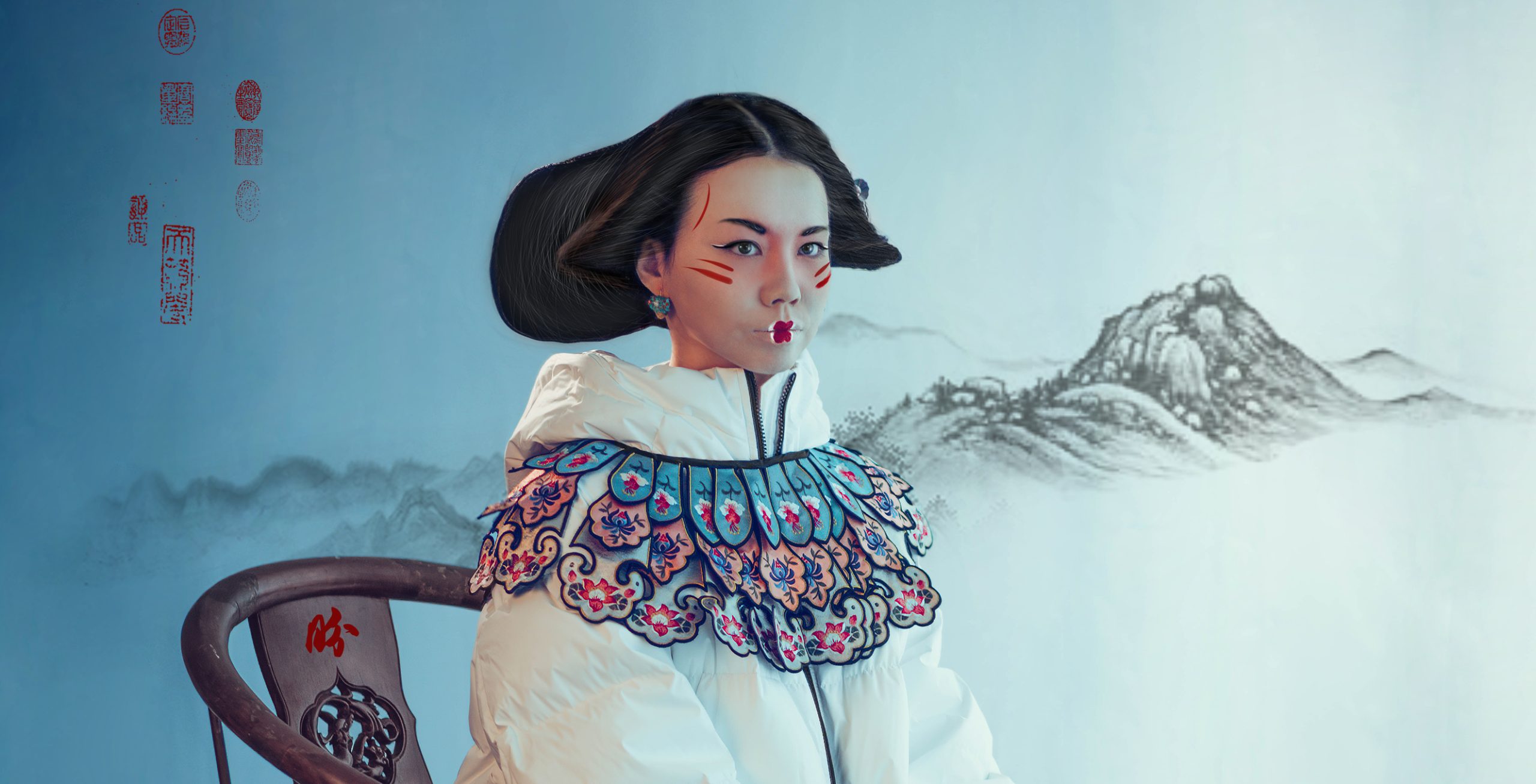
Ending the year with the final post of this 4-part mythical beast series while we are still in 2022. And we’re definitely dressed for this chilly time of the year, although, White Tiger corresponds to the Autumn season and the Metal element.
If you recall the Black Turtle/Warrior that represents the North and winter, you might find this slightly confusing (I know I do). The White Tiger was the actual warrior, and was accorded the status of the god of war by many ethnic minorities in China such as Naxi and Bai ethnic groups.

It is for this reason that for the traditional version of the White Tiger, styled the model with autumn leaves wound silk flower and also autumn colour velvet silk flowers for her hair. She is styled in a Ming dynasty style (14th-17th century) top with metal buttons and high collar because MIng was the period when Han Chinese people started using metal buttons extensively, and White Tiger also represents the metal element.
I also painted her eyebrows on with the distant outline of mountains (details below) as that was the natural habitat of the wild tigers.
The White Tiger, was an important totem for an ancient Chinese tribe in the East, which originally worshipped and adopted the Black Bird as its totem.
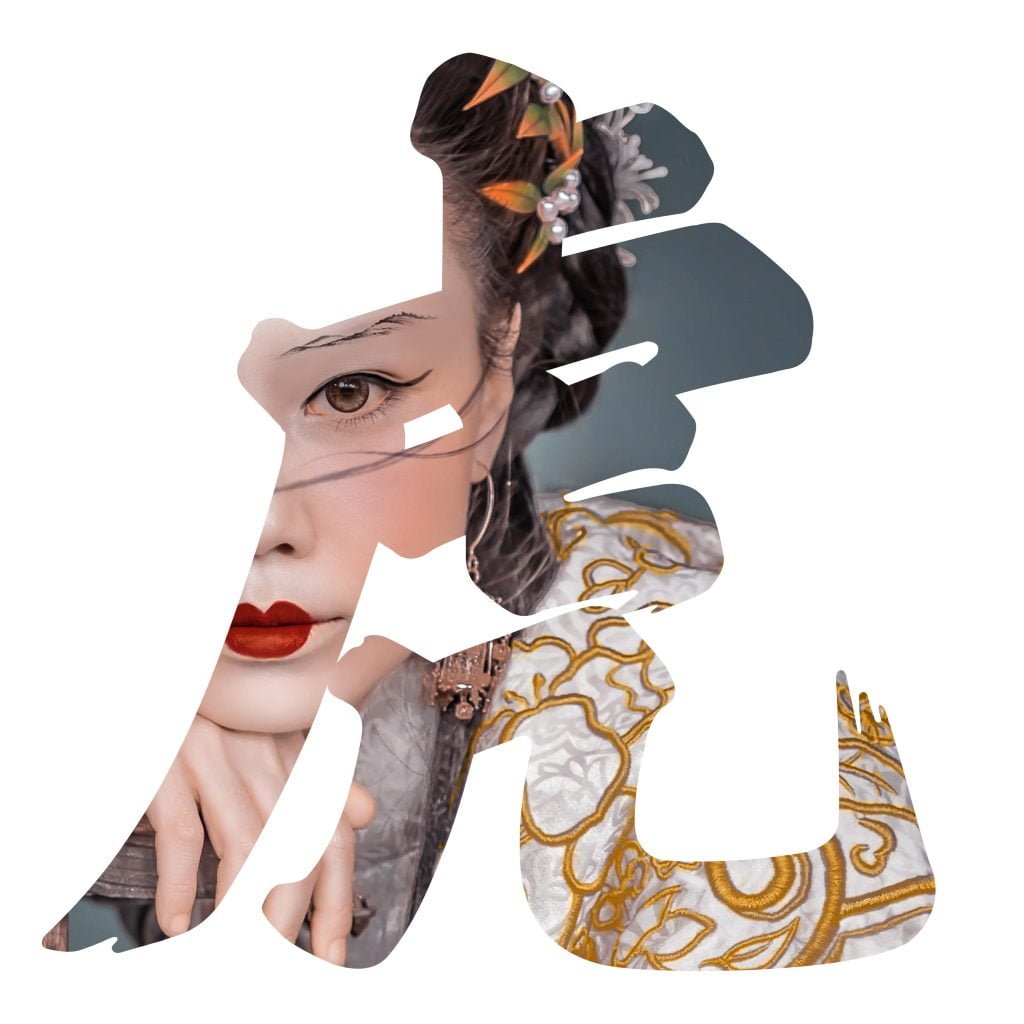
For the more modern, fusion styling with Aaron, we have decided to get her into a more Qing-dynasty Han woman from Southern China style, which most people might not be very familiar with.
Most of us would think of the Qing dynasty as the Manchurian women in their one-piece long robe and overhead hairpiece. But there was also this very unique style in southern China, where most of the diasporas’ ancestors would be from, with a huge extension behind. Many Qing dynasty TV drama these days used it for the older palace maidens, but it wouldn’t have appeared in the northern or the capital and worn by Manchurian as it was quite unique to southern Han Chinese.

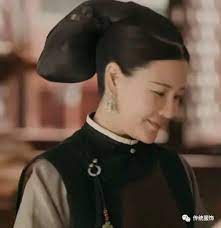
And I combined it with another style that is quite popular in the South during that period as well. I actually dedicated a write-up on that styling in my Qing courtesan post, and it also talked about the Chinese artists who were given a Portuguese name ~qua.

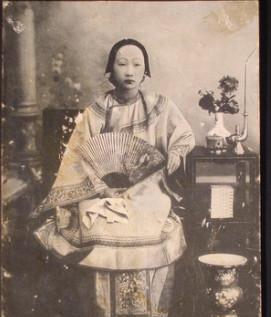


Of course the Qing dynasty cloud shoulder, and Mamian skirt are also quite an iconic pair. You might not have noticed the blue embroidered border around the skirt, but it was a unique style called the three-blue-embroidery during the Qing dynasty. There were three tones of blues used in such embroidery, and there were skirts and tops that were made up just by these three colours for embroidery. Quite a refreshing look from the usual colourful ones. There is a long history and one that also involves art and ink paintings, so stay tuned!
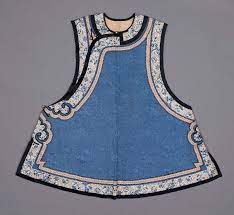
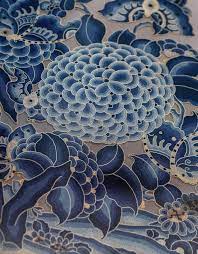

The cloud shoulder is also something that shows like Yanxi Palace have mistaken for something that is also worn by the Qing Manchurians. It was actually something only the Han Chinese wore, and the Manchurians, if they ever did, wore it as their cosplay attempt to dress up as the Han Chinese. Yes, cosplays and dressing-up for the gram has a longggg history in China. It deserves a post by itself, including that of the Empress Dowager, and the Qing Emperor.
If you have been following my posts, it wouldn’t be hard for you to identify the typical Tang dynasty style makeup that I deployed on the White Tiger styling. The crescent shaped temple drawing, the flower petal lips, and the tiny stubby eyebrow. If you are observant enough, you would see that I added the white fangs, like that of the tigers’ on her lips to frame her floral lips too!
There are a lot of details that people overlooked about the Qing dynasty, which, the more you go into it, the more fascinating it becomes. I have to admit Qing isn’t my favourite dynasty, but as I prepare for our upcoming Yaji which is focusing on that cusp of modernity in Asia, Qing becomes more fascinating. I hope to share more in time to come!
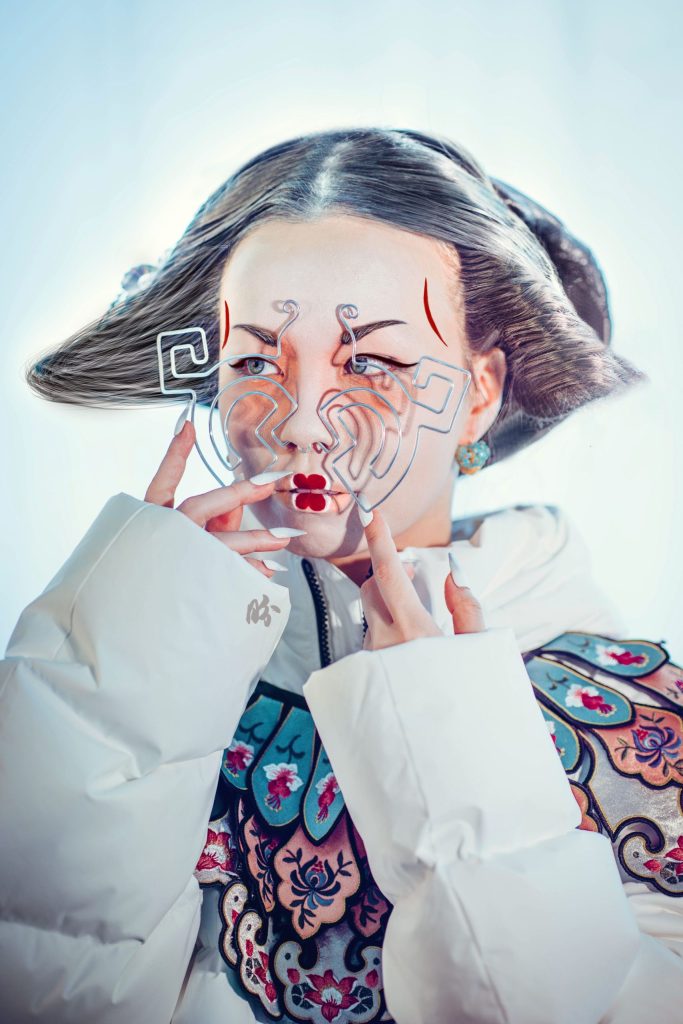

Leave a Reply